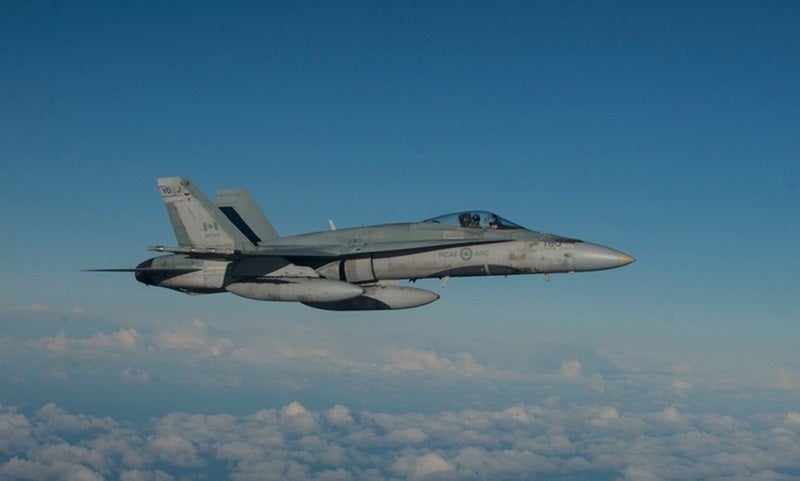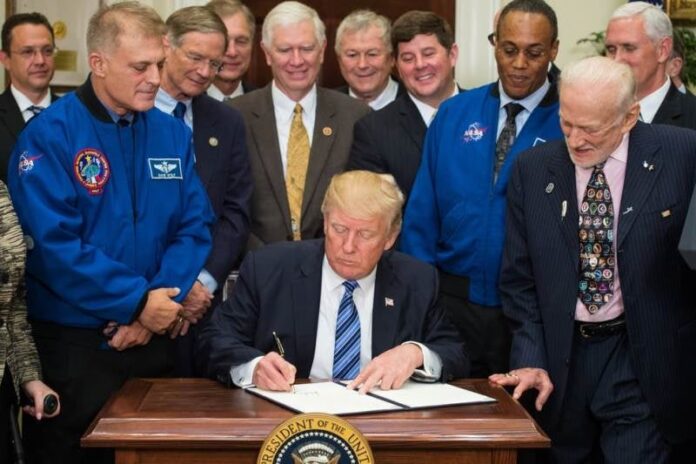
The Canadian government will return tariffs on American goods after the new US government, led by President Donald Trump, imposed a 25% additional tariff on its northern neighbour on 1 February 2025.
A day later, Ottawa announced a tariff of the same percentage on C$155bn ($105.5bn) worth of US-imported products. Notably, the retaliatory measure will impact a variety of aerospace parts, uncrewed systems, and firearms.
It is unclear how disruptive these costs will be on US defence procurement specifically given the large commercial market for the items in America. Nonetheless, these three imports are still known to be produced for dual-use purposes.
Such an exchange may be – a Washington think tank report predicted in October 2024 – “an historic low” between the two countries.
GlobalData, a leading intelligence consultancy, reveals that the US government is currently in the process of acquiring two different Bombardier Electronic Warfare (EW) aircraft – based on the commerical Global 6500 and the Challenger 650 – from Canada, valued at $642m and $592m respectively.
US still needs its allies
It does not end with surveillance aircraft. Canada is the largest export market for 36 American states, and is among the top three for 46 of them, with 43 exporting over $1bn to Canada every year.
Access the most comprehensive Company Profiles
on the market, powered by GlobalData. Save hours of research. Gain competitive edge.

Company Profile – free
sample
Your download email will arrive shortly
We are confident about the
unique
quality of our Company Profiles. However, we want you to make the most
beneficial
decision for your business, so we offer a free sample that you can download by
submitting the below form
By GlobalData
Meanwhile, the US Department of Defense (DoD) has even been able to offset shortages in its war stocks in the near-term through purchase agreements with allies around the world, including Canada.
In its ‘US Defense Market Report’, GlobalData suggests that “long-term solutions may require increased leverage of foreign manufacturing capabilities to ease pressure on domestic supply chains while capacity is expanded over the coming years.”
Evidence of such efforts emerged in November 2023, when the US Army awarded $1.5bn in contracts to nine companies located in the US, Canada, India, and Poland to accelerate production of 155mm shells in light of ongoing requirements.
Mutual tariffs
President Trump’s economic policy involves a punch-up with allies and adversaries alike. His approach will deregulate industry and introduce tax cuts with one hand while weaponising tariffs with the other.
In his inaugural speech, for the second time, Trump joked that his tariffs will derive funds from the rest of the world through an “external revenue service,” in contrast to the tax-collecting ‘Internal Revenue Service’ agency.
“Access to the American market is a privilege.”
White House fact sheet.
The White House specified that the American tariffs were implemented to deter against the growing presence of Mexican drug cartels operating fentanyl and nitazene synthesis labs in Canada – citing an unnamed study.
“Access to the American market is a privilege,” the executive office declared. “Tariffs are a powerful, proven source of leverage for protecting the national interest.”
While trade accounts for 67% of Canada’s gross domestic product (GDP) and 37% of China’s GDP, it accounts for only 24% of US GDP. However, in 2023 the US trade deficit in goods was the world’s largest at over $1tn.
A blow, but not a bust
Canada’s defence procurement, GlobalData intelligence indicates, relies predominantly on the US defence industrial base:
“Many of [Canada’s] programmes involve collaboration with foreign firms or the licensed production of foreign designs, produced with the cooperation of Canadian industry.
“This reflects the broader characteristics of the Canadian defence market: strong ties to the industry of its US neighbour…”
At present, Canada operates a wide range of American platforms and equipment, particularly in the Royal Canadian Air Force, including Humvee armoured vehicles, Tactical Armoured Patrol Vehicles, P-3C aircaft, F/A-18s, KC-130H, T-6A Texan II, etc.

Out of the nation’s ongoing acquisitions, only one American platform resides in Canada’s top three most expensive programmes: 88 F-35A combat aircraft from Lockheed Martin.
There are other American platforms too, including the $293m Sikorsky CH-148 Cyclone helicopter programme and the $119m King Air 350ER EW aircraft from Textron.
Yet, it is important to note that Canada has only really begun to modernise its ageing armed forces. The Canadian military’s equipment list, according to GlobalData, reveals that details of many programmes – such as the Remotely Piloted Aircraft Systems project – have yet to be disclosed or awarded to a contractor.
There is a silver lining: Canada may not be as reliant upon the US defence industry than is often assumed, and the country has space to pivot away from the American market.


